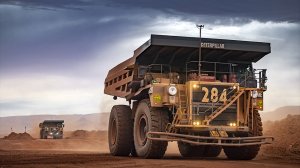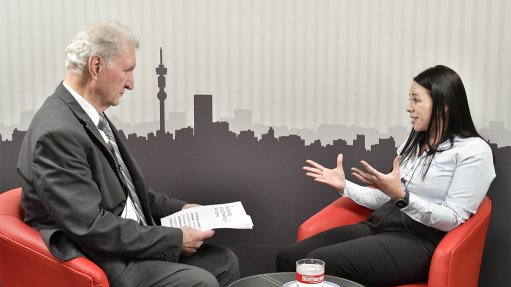Aveng demerger signals possible exit from South African market
Construction, engineering and contract mining group Aveng has outlined plans to split its Australian and South African operations into two separate and independent entities.
This demerger, which will be executed through a series of yet-to-be-determined transactions, reflects the company’s strategic decision to streamline its operations and hints at the company’s intention to realign its focus away from the African market.
As part of the proposed split, Aveng will retain its South African contract mining business Moolmans, while the Australian infrastructure construction and engineering subsidiary McConnell Dowell will assume control of construction company Built Environs.
As a result of this demerger, McConnell Dowell will no longer be a subsidiary of Aveng but will instead become an independent entity. It is expected to seek a listing on the ASX and potentially also the JSE.
Moolmans, on the other hand, will remain under Aveng's ownership for the time being but with a focus on exploring alternative ownership structures. This includes the potential introduction of broad-based black economic empowerment capital, aligning with South Africa's economic transformation goals as laid out in the Mining Charter III.
Aveng CFO Adrian Macartney also indicated to Engineering News & Mining Weekly that an outright sale of Moolmans is a possibility, indicating a willingness by Aveng to reassess its commitment to the South African market if the price is right.
Another indication that Aveng is seeking to reduce its involvement in South Africa is the company’s decision to change its financial reporting currency from rand to Australian dollar.
To oversee the implementation of the demerger, Aveng has engaged financial services firm Macquarie Capital.
During the company’s financial results presentation on August 20, Aveng CEO Scott Cummins emphasised that McConnell Dowell and Moolmans operate in distinct markets with different business characteristics and value propositions.
According to Cummins, this divergence is what has prompted the decision to pursue separate operating and growth strategies, which will allow each business to better access appropriate capital markets and support their respective investment requirements.
“This will support and enhance the prospects of both entities for all stakeholders by enabling the two entities to access the most attractive capital to pursue their separate strategies,” he said.
He also acknowledged the varying levels of investor interest in the two businesses.
“There are investors out there that are very interested in McConnell Dowell and Built Environs, as well as in the markets and industries they operate in. And there are investors interested in contract mining and where Moolmans works.
“But getting the two together, there's a lot less interest. So, by creating more of a pure play for each of the entities, we believe we can unlock their strategic long-term profitable growth potential,” he explained.
FINANCIAL PERFORMANCE
The demerger announcement came towards the conclusion of Aveng’s year-end results presentation, where a clear distinction between the performance of the Australian and South African business units was evident.
The Australasian market, where McConnell Dowell and Built Environs operate, was described as robust and profitable, with steady demand for infrastructure projects. In contrast, the South African contract mining market, where Moolmans is active, was characterised as constrained, with ongoing challenges related to infrastructure and logistics impacting on operations.
McConnell Dowell contributed about 78% of Aveng’s total revenue, generating about A$2.4-billion for the 12 months to June 30 – a 23% increase in revenue for the infrastructure business, up from A$2-billion the previous year.
Most of this revenue was derived from projects in Australia and New Zealand, with about 11% coming from Southeast Asia. Notably, 98% of the work in McConnell Dowell's portfolio was reported as profitable.
Built Environs, Aveng’s commercial building unit, accounted for about 13% of the group’s total revenue, with work-in-hand valued at about A$443-million by the end of the financial year.
Of this, about one-third of the work was based in New Zealand, with the remainder in Australia, where all ongoing projects were reported as profitable. Built Environs saw an 83% increase in revenue to A$419-million, compared with A$229-million in the previous financial year ending June 30, 2023.
In contrast, Moolmans, which operates in South Africa, contributed the remaining 9% of Aveng’s total revenue. The company reported work-in-hand valued at R5.3-billion at year-end, though it faced challenges during the period, including the downscaling of two major contracts.
Despite these issues, Moolmans experienced an increase in revenue and positive operating earnings, although the company’s clients were negatively affected by South Africa's ongoing infrastructure constraints.
Cummins noted that "continued challenges relating to road and rail infrastructure, ports, electricity and logistical challenges continue to impact our clients’ operational plans."
Moolmans reported marginal operating earnings of A$2-million, marking an improvement from the A$9.6-million loss reported at the end of June 2023. However, operating margins remain under pressure, despite efforts to improve volumes and reorganise the company’s executive leadership.
Overall, Aveng reported a 27% increase in revenue across the group, reaching A$3.1-billion, up from A$2.4-billion the previous year. Operating earnings before capital items saw a significant improvement, rising to A$34.5-million from a loss of A$86.8-million in the prior financial year.
Headline earnings also improved to A$38-million, compared with a loss of A$77.7-million the previous year. Earnings for the year reached A$25.7-million, up from a loss of A$91.8-million in the 2023 financial year.
The group reported gross earnings of A$175.6-million at a gross margin of 5.7%, up from A$38.8-million at a gross margin of 1.6% last year, an increase of more than 100%.
Cummins acknowledged that the company continued to be affected by the impacts of hyper-escalation on projects awarded before Covid-19. However, he noted that the impact had been largely mitigated through various strategies designed to address this risk.
He said the embedded margin in work-in-hand is expected to improve as these pre-Covid-19 projects are completed.
Comments
Press Office
Announcements
What's On
Subscribe to improve your user experience...
Option 1 (equivalent of R125 a month):
Receive a weekly copy of Creamer Media's Engineering News & Mining Weekly magazine
(print copy for those in South Africa and e-magazine for those outside of South Africa)
Receive daily email newsletters
Access to full search results
Access archive of magazine back copies
Access to Projects in Progress
Access to ONE Research Report of your choice in PDF format
Option 2 (equivalent of R375 a month):
All benefits from Option 1
PLUS
Access to Creamer Media's Research Channel Africa for ALL Research Reports, in PDF format, on various industrial and mining sectors
including Electricity; Water; Energy Transition; Hydrogen; Roads, Rail and Ports; Coal; Gold; Platinum; Battery Metals; etc.
Already a subscriber?
Forgotten your password?
Receive weekly copy of Creamer Media's Engineering News & Mining Weekly magazine (print copy for those in South Africa and e-magazine for those outside of South Africa)
➕
Recieve daily email newsletters
➕
Access to full search results
➕
Access archive of magazine back copies
➕
Access to Projects in Progress
➕
Access to ONE Research Report of your choice in PDF format
RESEARCH CHANNEL AFRICA
R4500 (equivalent of R375 a month)
SUBSCRIBEAll benefits from Option 1
➕
Access to Creamer Media's Research Channel Africa for ALL Research Reports on various industrial and mining sectors, in PDF format, including on:
Electricity
➕
Water
➕
Energy Transition
➕
Hydrogen
➕
Roads, Rail and Ports
➕
Coal
➕
Gold
➕
Platinum
➕
Battery Metals
➕
etc.
Receive all benefits from Option 1 or Option 2 delivered to numerous people at your company
➕
Multiple User names and Passwords for simultaneous log-ins
➕
Intranet integration access to all in your organisation





















